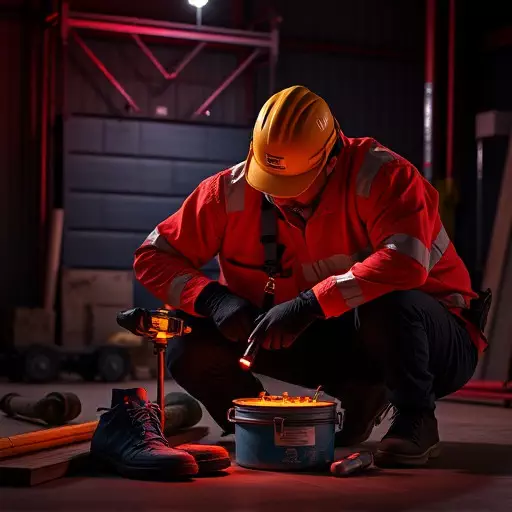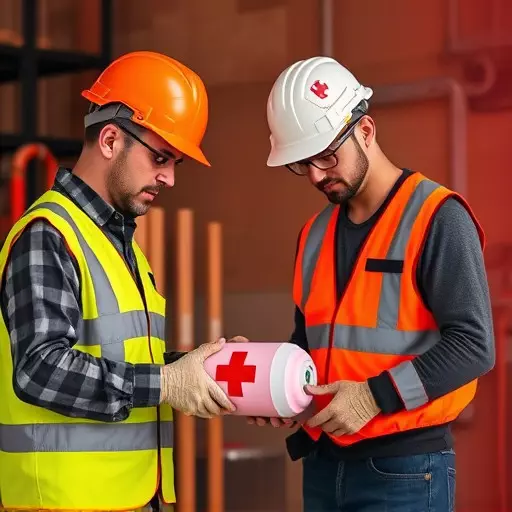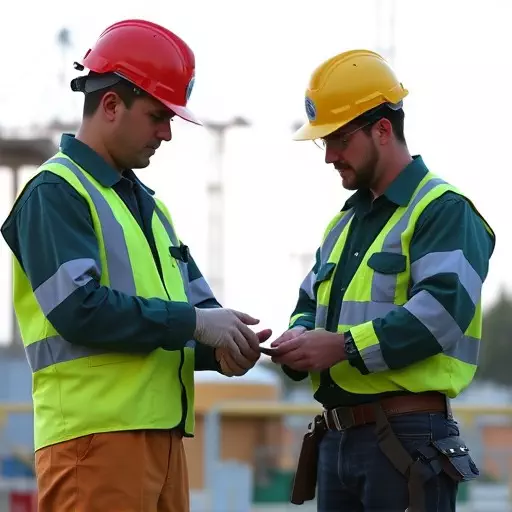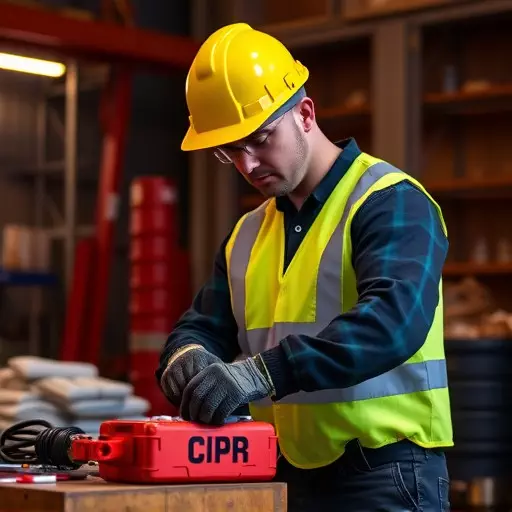Construction sites require specialized emergency response training, with CPR being a crucial component. It meets OSHA's mandatory first aid and CPR certification needs, fosters a culture of safety, and enhances survival rates in medical emergencies. Workshops teach essential first aid basics like recognizing cardiac arrest signs, performing chest compressions, and using defibrillators. OSHA mandates such training for high-risk industries, ensuring workers are prepared to handle cardiac emergencies due to physical demands and site hazards. Comprehensive CPR training is vital for construction professionals' safety and effective on-site emergency response.
In the high-risk environment of construction sites, prompt and effective response to medical emergencies can save lives. On-site CPR training workshops emerge as a vital tool in empowering construction workers with the first aid basics they need. This article explores the significance of CPR training for construction workers, delving into OSHA requirements for certification and highlighting the benefits of hands-on on-site workshops. We also provide insights into key components of effective training programs and tips for successful implementation.
- Understanding the Importance of CPR Training for Construction Workers
- OSHA Requirements for CPR Certification: What You Need to Know
- Benefits of On-Site Workshops: A Hands-On Approach
- Key Components of Effective CPR Training Programs
- Preparing Your Team: Tips for Successful Implementation
Understanding the Importance of CPR Training for Construction Workers

Construction sites present unique challenges and risks that require specialized training for workers to handle emergency situations effectively. CPR (Cardiopulmonary Resuscitation) training is an essential component of this preparation, as it equips employees with the knowledge and skills to respond to cardiac emergencies, potentially saving lives. Not only does OSHA (Occupational Safety and Health Administration) mandate specific first aid and CPR certifications for construction workers, but understanding the importance of these workshops goes beyond legal obligations.
CPR training for construction workers goes beyond meeting regulatory standards; it fosters a culture of safety and preparedness within the workplace. Construction sites are often bustling environments with heavy machinery and various hazards, making it crucial that personnel are equipped to handle medical emergencies promptly. The first aid basics taught in these workshops include recognizing cardiac arrest signs, performing chest compressions, and using defibrillators, all of which can significantly improve survival rates until professional medical help arrives.
OSHA Requirements for CPR Certification: What You Need to Know

Construction sites can be high-risk environments, making it crucial for construction workers to be equipped with essential life-saving skills like cardiopulmonary resuscitation (CPR). The Occupational Safety and Health Administration (OSHA) sets forth specific guidelines and requirements regarding CPR training, ensuring that employees are prepared to respond in emergency situations. For construction workers, understanding these OSHA mandates is vital to maintain a safe work environment.
Under OSHA regulations, employers must provide their employees with regular first aid and CPR training, especially in industries where risks of cardiac emergencies are heightened. This includes construction sites, where physical demands and potential hazards may contribute to health risks. The standard requires that workers receive instruction in the basics of first aid, including CPR, and that these skills be refreshes periodically to ensure proficiency.
Benefits of On-Site Workshops: A Hands-On Approach

Key Components of Effective CPR Training Programs

Preparing Your Team: Tips for Successful Implementation

Preparing your team for on-site CPR training workshops is a crucial step in ensuring successful implementation and maximizing learning outcomes. Start by assessing your workforce’s current level of first aid knowledge and experience. Identify any specific needs or concerns within different job roles, especially for construction workers who often face unique risks. Providing tailored CPR training for construction workers can significantly enhance their ability to respond effectively in emergency situations.
Encourage open communication and address any fears or questions they may have. Ensure your workshops align with OSHA requirements for CPR certification, covering both the skills and knowledge needed. Offering hands-on practice sessions, using realistic mannequins and simulated scenarios, allows workers to gain confidence in their abilities. Regularly updating training content and providing refresher courses will keep your team prepared and ready to respond when it matters most.


